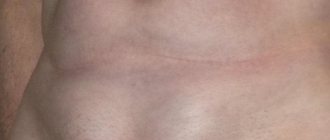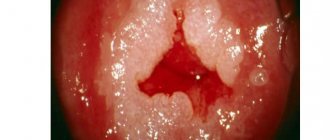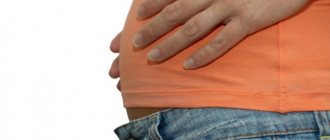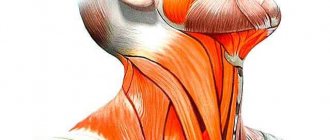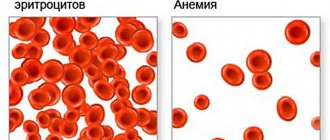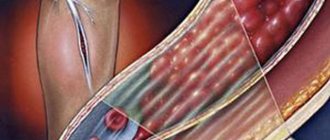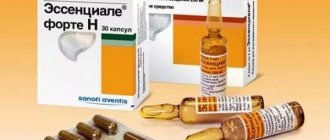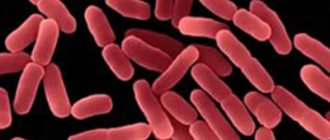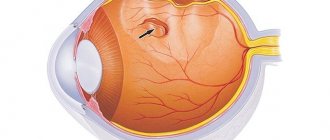Diaphragmatic hernia is a pathological process in which the abdominal organs are displaced into the chest cavity. This type of disorder is almost always chronic, with fairly frequent relapses.
- Etiology
- Classification
- Symptoms
- Diagnostics
- Treatment
- Possible complications
- Prevention
It should be noted that congenital diaphragmatic hernia, like acquired ones, occurs quite often, but in most cases it occurs without symptoms. The disease is not diagnosed or can be discovered accidentally during an examination regarding another pathological process.
This pathology has no restrictions by gender and age: diaphragmatic hernia is diagnosed in newborns, adolescents and adults.
The clinical picture is characterized by pain in the stomach and chest and other symptoms of a gastroenterological nature. To establish a diagnosis, the doctor should order the patient to undergo a thorough diagnostic program.
Treatment will depend on the form of the pathological process. So, if a small segment of the stomach gets into the chest cavity, a specific course of therapy may not be needed. In more complex clinical cases, surgery followed by recovery is required.
Diet will be included in the course of therapy. Strangulated diaphragmatic hernias are operated on urgently. In any case, treatment should be carried out only taking into account an integrated approach. Dietary nutrition should be observed regardless of the chosen treatment tactics.
General concept of the disease
In order to better understand what a hernia is and how to treat it, you need to superficially familiarize yourself with the knowledge of human anatomy.
The diaphragm is a fairly thin partition with a dome shape. It consists of muscles and connective tissue. The function of the diaphragm is to separate the abdominal and thoracic cavities. It contains a special hole consisting of muscle bundles. The esophagus passes through it. Through this organ, food enters directly into the stomach. A hiatal hernia is formed due to a weakening of the food opening. It is characterized by vivid symptoms
Esophageal hernia is quite common. Moreover, with age, the risk of pathology increases. That is, in elderly people over 70 years of age, a hernia in the esophagus is diagnosed in 69% of cases. Its characteristic feature is that it develops more often in women.
A hiatal hernia significantly reduces a person’s quality of life, as it causes unpleasant symptoms and pain. Although in some cases its course is asymptomatic. The disease is fraught with serious complications of the lungs, heart and intestines. A dangerous consequence of a hiatal hernia is cancer, which develops as a result of prolonged release of acid from the stomach into the esophagus.
If the patient’s symptoms were detected in time and the treatment was carried out correctly, then the pathology can be completely cured without surgery.
Three methods of conservative treatment
Medicines
The first task of conservative treatment is to prevent the reflux of gastric contents into the esophagus, which causes serious harm to the mucous membrane. When this task is completed, the symptoms of the disease (heartburn, belching, an unpleasant feeling of constriction in the chest and pain after eating) are reduced. For this purpose they prescribe:
- Antacids (Almagel, Maalox, Gastal) are drugs that bind hydrochloric acid, which is the main component of gastric juice.
- Medicines that can reduce the production of hydrochloric acid (omeprazole, esomeprazole, pantoprazole).
- Drugs that normalize the motility of the alimentary canal (metoclopramide, cisapride, domperidone). These drugs prevent stomach contents from flowing back into the esophagus.
- Histamine H2 receptor blockers (ranitidine, famotidine, roxatidine) act on the center of hydrochloric acid secretion and help reduce its production and intake.
Physiotherapy
Physical therapy exercises are necessary to strengthen ligaments. Gymnastics are performed on an empty stomach at least half an hour before meals. The first exercises are done lying down, then move to a sitting position.
Example of the “first exercise lying down”:
Starting position (IP) lying on your back, head and shoulders on a pillow. Place the middle and index fingers of both hands under the ribs, on the midline of the abdomen. Take a breath. As you exhale, press your fingers into the peritoneum as deeply as possible. Gently straightening your fingers, move your stomach to the left and down. Repeat 5-6 times.
Performing the first exercise
This exercise reduces pain and eliminates the feeling of a lump in the throat:
IP sitting on a chair. Relax as much as possible. Place your hands under the ribs so that the pads of your thumbs feel each other, and the rest of your fingers are parallel to the midline. Inhale and as you inhale, pull the skin upward with your thumbs. Exhale and as you exhale, press with your thumbs as hard as you can, directing the pressure slightly downward. Repeat 5-6 times.
Doing an exercise to reduce pain and eliminate a lump in the throat
An important element of therapeutic exercises is breathing exercises. It is done two hours after eating. It consists of 3 simple exercises:
(if the table is not completely visible, scroll to the right)
| Initial position | Exercise |
| Lying on your right side, head on the pillow. | Inhale and push your stomach out as much as possible. Exhale and relax. Repeat 4-5 times. There is no need to strain and suck in your stomach at the beginning of classes - start doing this in a week. |
| Down on my knees | Inhale and as you inhale, slowly lean to the left. As you exhale, return to the starting position. Repeat the same to the right. Do it 5-6 times. |
| Lying on your back | Breathe evenly and rhythmically. Without changing your breathing rhythm, turn to one side, then to the other. Repeat 4-5 times. |
Diet
Overeating and irregular nutrition are the main provocateurs of the disease. Without a diet, treatment of a hiatal hernia is impossible, and at the very beginning of the formation of a hernia, diet is the only method of treatment.
Three principles of diet:
- Compliance with the regime. The volume of food consumed at one time should not burden the stomach: eat 5–6 times a day, the volume of food at one time should not exceed 250 ml. The time intervals between meals should be equal. Prepare dinner only from easily digestible foods.
- Reduced acidity. Always eliminate foods that require increased production of gastric juice: all spicy foods, spices, smoked foods, sweet desserts and most confectionery products. An excessive amount of gastric juice leads to its penetration back into the esophagus, which greatly damages the mucous membranes and leads to the formation of ulcers and erosions.
- Reducing gas formation and preventing constipation. The formation of gases leads to increased pressure on the stomach. To eliminate this point, give up:
- cabbage,
- corn,
- legumes,
- whole milk,
- baking with yeast,
- carbonated drinks.
Reasons for the development of the disease
A hiatal hernia (HH) is a serious pathology caused by the following reasons:
- shortened esophageal tube due to abnormal intrauterine development (congenital pathology);
- dystrophic changes in the structure of connective tissue, accompanied by its atrophy and loss of elasticity;
- sudden strong increase in abdominal pressure;
- associated pathologies: gastric ulcer, chronic cholecystitis;
- endocrinopathy;
- weakness of the muscles of the esophageal opening;
- anatomical features of a person;
- constant lifting of heavy objects;
- pregnancy;
- abdominal injuries;
- violation of gastrointestinal motility;
- liver atrophy;
- sudden weight loss;
- surgical intervention.
A hiatal hernia may be asymptomatic, but this does not make it any less dangerous.
Let's sum it up
Remember that conservative treatment of a hiatal hernia will be effective only if you strictly take all prescribed medications and follow a lifelong diet and daily routine. If you are not ready to constantly limit yourself, you should think about surgery.
Finally, good news: in modern pharmacology, drugs have appeared without side effects and are not addictive. This is a big step forward in the treatment of hiatal hernia, because during therapy many problems arise due to the body’s addiction to certain medications, for which it is necessary to look for an alternative.
Types of pathology
The manifestation of the disease may vary. It all depends on the type of hiatal hernia. Among them, traumatic and non-traumatic hernias can be distinguished.
In this case, hernias of non-traumatic origin are divided into: congenital, hernias of weak zones of the diaphragm, atypical localization and natural openings located in the diaphragm.
Most often in clinical practice, hiatal hernia (HH) occurs.
It is customary to distinguish the following classification of hiatal hernias, which is based on the anatomical and physiological features of their appearance: Axial or sliding hiatal hernias, according to the severity of penetration of the stomach into the chest cavity
- Cardiac - only the initial or cardiac part of the stomach penetrates into the chest cavity;
- Cardiofundal - the cardiac section penetrates into the chest cavity along with the fundus of the stomach;
- Subtotal gastric – most of the stomach penetrates along with the lesser and greater curvature;
- Total gastric - the entire stomach up to the antrum can be displaced into the chest.
Why is a hiatal hernia dangerous?
The consequences of a hernia are dangerous to health. If they are suspected, the patient is hospitalized in the surgical department for surgery. Hernia in women during pregnancy can threaten the health of the baby.
Infringement
A strangulated hernia is an acute pathology characterized by severe pain. As a result of contraction of muscle structures, the organ located in the hernia is infringed. Nerves and blood vessels are pinched. Due to poor circulation, necrosis develops.
Signs that the hernia is strangulated:
- strong pain;
- bleeding;
- vomiting streaked with blood;
- dyspnea;
- tachycardia;
- hypotension.
If help is not provided in time, purulent peritonitis develops with perforation of the esophagus or stomach.
Ulcer
An esophageal ulcer develops against the background of peptic esophagitis. A defect forms on the wall of the organ due to the influence of hydrochloric acid. The patient is bothered by intense chest pain, which intensifies when swallowing. Painkillers do not bring relief, but aggravate inflammation. Esophagoscopy is used for diagnosis.
Perforation
Perforation is a perforation of the wall of the esophagus with the formation of a through defect. This pathology is characterized by the entry of the acidic stomach into the mediastinum. Purulent mediastinitis develops. The complication is severe and requires emergency medical care.
Bleeding
A hiatal hernia is often complicated by bleeding. With constant exposure to hydrochloric acid on the mucous membrane of the esophagus, the vessels are exposed. The walls of the arteries are damaged - profuse bleeding opens. It is difficult to stop bleeding from the esophageal arteries. The patient quickly falls into hemorrhagic shock. Blood pressure drops and heart rate increases. The patient is unconscious. Urgent hospitalization in a surgical hospital is required.
Other complications
Hernia is always complicated by esophagitis. Inflammation of the esophagus occurs due to acid reflux. The caustic contents of the stomach destroy the walls of the organ. Reflux esophagitis is characterized by pain and difficulty swallowing.
With severe destruction, adhesions are formed, narrowing the lumen of the esophagus. These changes lead to Barrett's syndrome. When it appears, the risk of developing esophageal cancer increases 100 times.
Against the background of impaired motility, chronic cholecystitis and cholecystopancreatitis develop. These diseases are caused by congestion in the venous plexuses.
Symptoms of pathology
If you have a hiatal hernia, the symptoms are:
- severe pain in the epigastric region, spreading down the esophagus;
- painful sensations radiating to the interscapular area and appearing mainly after eating;
- heart rhythm problems;
- heartburn, hiccups, burning sensation in the tongue;
- disturbance in the passage of food through the esophagus;
- hoarseness in the voice;
- tracheobronchitis;
- belching sour or airy immediately after eating;
- regurgitation;
- breathing problems.
A hiatal hernia can cause serious complications and must be treated.
Characteristic symptoms
The symptoms of a hernia will differ depending on whether it is a traumatic hernia or not.
Symptoms also depend on:
- whether the disease developed acutely (quickly),
- or the hernia penetrated from the abdominal cavity into the thoracic cavity for a long time (chronic course),
- or the hernia has been strangulated (compressed) in the hole from which it came out.
Acute diaphragmatic hernia most often manifests itself with the following symptoms:
- Chest pain that gets worse when coughing.
- Heartburn (feeling of heat behind the lower part of the sternum and acidic contents in the mouth). It intensifies when lying down, when bending forward or down. Heartburn also appears if you lie down immediately after eating.
- Belching with air or sour contents, which appears even during sleep and can be the cause of frequent bronchitis and pneumonia (due to food fragments entering the respiratory tract with air expelled from the stomach).
- Difficulty swallowing (a “lump” appears not in the throat, but in the sternum area) of liquid food, water; It is especially acute when eating in a hurry. In this case, solid food most often goes well.
- Bloating.
- Constant cough.
- Difficulty breathing (a person feels that he cannot “catch his breath” or that he does not have enough air).
- A burning sensation behind the sternum.
- Rapid heartbeat after eating.
- Rumbling or “gurgling” in the chest.
If a person has developed chronic diaphragmatic hernia, he does not feel anything for a long time. Subsequently, the same symptoms develop as in the acute version.
Symptoms of a strangulated diaphragmatic hernia:
- severe pain in one half of the chest (most often in the left),
- loss of appetite,
- nausea,
- bloating,
- gases stop passing.
Diagnostic features
Naturally, any pathology requires therapy. But treatment of a hiatal hernia should be done only after the patient has been accurately diagnosed. The patient will require a thorough examination, including:
- X-ray using a contrast agent. In this case, the doctor receives an image of the protrusion.
- Fibrogastroscopy. Thanks to this study, it is possible to assess the general condition of the esophagus and stomach.
- pH measurements. This procedure allows you to determine the level of acidity of gastric juice.
- Ultrasound of the internal organs of the abdominal cavity.
- Endoscopic examination.
- Biopsy of the gastric mucosa.
- Laboratory analysis of stool (to determine the presence of blood).
- Gastrocardiomonitoring.
Only after such an examination can a hiatal hernia be treated.
Symptoms
In most cases, AGPOD does not indicate its presence in any way. It is possible to detect a hernia in patients only by chance during the diagnosis of another disease.
But still, AKPOD has a number of specific signs:
- Constant heartburn.
- Frequent hiccups after eating.
- Belching with a sour taste.
- Aching, dull pain behind the sternum, radiating to the back and under the shoulder blades.
- Disturbance of the swallowing reflex during the intake of liquid food.
- Bitterness in the mouth.
- Soreness of the root of the tongue.
- Hoarse voice.
Treatment of the disease
If there is a hernia of the lower back, the causes of the pathology need to be clarified first. Without this, therapy will be ineffective. Basically, the patient is prescribed conservative and physiotherapeutic treatment. Removal of the hernia is performed in difficult cases in which the prescribed therapy does not help, or there is a threat to life due to bleeding or strangulation of the protrusion.
So, for a hiatal hernia, treatment includes:
- Drug therapy. For hiatal hernia, treatment is carried out using several groups of drugs. First, medications are used to neutralize excessive amounts of hydrochloric acid in the stomach (Maalox, Phosphalugel). We need means to restore the correct direction of food movement through the digestive tract: Cerucal, Motilium. The patient should also take medications to reduce the production of hydrochloric acid: Ranitidine, Famotidine.
- Diet. It is useful for the patient to eat dried bread, cereals, and dairy products. You should also eat boiled or baked meat and fish. The diet should contain vegetable and butter. It is better for the patient to avoid mushrooms, cabbage, beans and fried foods. In addition, you should not drink alcohol, fatty meat and fish.
- Complex of physical therapy.
- Traditional methods of treatment.
Features of physical therapy
Diagnosis of hiatal hernia must be differential, only then treatment will be effective. Therapeutic gymnastics has enormous benefits for the patient. The following complex will be effective:
Hiatal hernia in children
Infantile hernias are often the result of congenital anomalies. The intrauterine lining of the digestive tract and diaphragm is disrupted. There are 3 types of hiatal hernia in pediatric practice:
- “breast” type of stomach;
- paraesophageal;
- sliding.
The first type of hernia is rare. Its peculiarity is the absence of participation of the peritoneum in the formation of the hernial sac. Changes in the last two options coincide with diseases in the adult group of patients.
An early symptom of hiatal hernia in newborns is regular regurgitation and vomiting. Respiratory disorders are often associated. Children are bothered by coughing and choking. Regular inhalation of acidic stomach contents causes congestion in the lungs and pneumonia. With this pathology, surgical interventions are indicated at an early age.
What complications are possible?
The symptoms of a hiatal hernia are quite pronounced, so if the disease appears, you should urgently consult with medical specialists. Otherwise, the pathology causes the following complications:
- Gastritis or ulcerative lesion of the part of the stomach that is affected by the hernia.
- Severe internal bleeding.
- Anemia.
- Entry of the lower esophagus into the hernial sac.
- Inflammation of the gastric mucosa.
- Infringement of protrusion, provoking the death of tissues of internal organs.
- Shortening of the esophagus. This complication is very dangerous for the patient’s health.
- A rare prolapse of the stomach lining back into the esophagus.
Esophageal hernia is not fatal (at first), but a dangerous disease, the fight against which cannot be postponed.
Forecast
With the right medical approach, the prognosis is favorable . Strangulations of a diaphragmatic hernia with all the ensuing consequences (in particular, necrosis of the strangulated contents) occur much less frequently than strangulations with other types of hernias.
Kovtonyuk Oksana Vladimirovna, medical observer, surgeon, consultant doctor
12, total, today
( 192 votes, average: 4.65 out of 5)
Relaxation of the diaphragm, its relaxation: what is it?
Inguinal hernia: symptoms, causes, removal surgery
Related Posts
Prevention of pathological condition
How to treat a hiatal hernia is already clear. However, you should find out how to prevent its development. In general, the disease has a positive prognosis if therapy was started on time. In order to prevent its development, it is necessary to observe the following preventive measures:
- strengthen the muscular corset of the chest and abdominal walls with the help of exercise therapy exercises;
- avoid constipation;
- eliminate heavy loads;
- monitor body weight;
- stop smoking and drinking alcohol;
- wear natural and comfortable clothes that will not put pressure on your chest and stomach (corsets).
This is all the necessary information on the topic: “Hiatal hernia: symptoms, treatment.” The main thing is to prevent its development. Be healthy!
Diagnostics
Confirmation of the diagnosis is impossible without the use of special studies.
- Fibrogastroduodenoscopy is one of the most accurate methods and allows, using a device inserted into the esophagus, to detect the presence of pathology and the degree of changes in internal organs.
- Fluoroscopy is performed to identify inflammatory processes, ulcers, scars and narrowings.
- PH-metry is carried out to determine the degree of acidity in the esophagus.
Before the tests, the patient should not take medications, as this may affect the accuracy of the results. You should also refrain from eating, as a gag reflex may be triggered during the insertion of the research probe.
Surgical intervention
The operation is performed when the disease is severe. The following interventions are most effective:
- Nissen fundoplication. It involves restoring the desired angle between the abdominal part of the esophageal tube and the fundus of the stomach. A flap is prepared from the stomach, which is fixed at the site of the opening (expansion of the diaphragm).
- Resection. It is carried out in case of cicatricial narrowing of the esophageal tube.
- Gastropexy (fixation of organs to structures located under the diaphragm next to the abdominal wall).
The operation is most often performed as planned. Preliminary tests are taken and instrumental studies are carried out. Access to tissue can be open (through an incision in the abdominal wall) or endoscopic.
Indications for surgery
Indications for surgical treatment of a hernia are:
- failure of conservative therapy;
- strangulation of hernial contents;
- narrowing of the esophagus;
- tissue dysplasia.
The operation is performed when the disease is severe.
The operation is contraindicated in the development of acute infectious pathology, decompensated cardiac and respiratory failure, blood clotting disorders, severe kidney and liver damage, oncological pathology and during pregnancy
Laparoscopy
Surgical treatment of patients can be carried out through laparoscopy (probing). Its advantages are less tissue trauma and simplicity. After preliminary anesthesia, a puncture is made, after which a tube with a camera is inserted. The surgeon repairs the hernia while looking at the monitor screen.
Etiological factor
A diaphragmatic hernia occurs due to the expansion of the hernial orifice. The provoking factors for expansion are the following:
- rise in abdominal pressure;
- impaired motility in the digestive canal in the risk zone;
- decreased fixation of the main ligaments.
All these processes are observed during the aging of the body, and therefore the reverse development of all organs and tissues occurs. There are some pathologies in which a person is predisposed to this disease. This is when connective tissue is damaged, for example, with varicose veins of the lower extremities, hemorrhoids, and flat feet.
In addition, there are a number of factors that provoke intra-abdominal pressure:
- frequent bowel movements (constipation and diarrhea), flatulence, dysbacteriosis;
- pregnancy period;
- oncological neoplasms of the abdominal organs;
- physical stress on the abdominal muscles due to sports or heavy physical work;
- presence of abdominal injuries;
- for obstructive pulmonary diseases and excess weight.
In children, this disease develops in utero due to abnormal development of the digestive organs and ligamentous apparatus.
Anatomical features of the esophagus
The esophagus is a tube that descends from the chest into the abdominal cavity. The descent passes through the opening of the esophagus in the diaphragm, consisting of muscle structures. The normal diameter of the hole is wide enough, approximately 2.5-3 cm, so that the food bolus passes through it freely. The muscles of the opening contract during inspiration, increasing the bend of the esophagus in the transition zone. In the abdominal region, the length of the esophagus is about 2 cm, then it enters the stomach at an acute angle.
The ligaments that support the organ and connect it to the stomach and diaphragm ensure its retention and interaction of the esophagus with the diaphragm during swallowing and breathing.
Types of hernias UNDER
- Sliding. Another name – floating hiatal hernia – reflects the essence of the disease. The stomach, intestines or omentum enter the chest cavity periodically (freely passing back and forth). Manifestations of the disease may at times be absent and appear spontaneously when food refluxes from the stomach into the esophagus. Typically, heartburn, belching, and pain are a concern. How to relieve pain from a hiatal hernia (sliding)? Taking antacids (acid-reducing agents – Maalox, Smecta, Rennie, Almagel, etc.) helps;
- Paraesophageal (paraesophageal). Constantly located on the side of the esophagus in the chest cavity is the upper part of the stomach. The food that gets there stagnates, causing patients an extremely unpleasant, bursting sensation in the chest after eating. Therefore, they first try to eat less, and then they may even refuse to eat (for fear of pain). This behavior leads to exhaustion of the patient;
- Complicated hernias. The most dangerous thing is a strangulated hernia. The hernial sac becomes motionless in the hole, its contents cannot be evacuated. Signs of intoxication appear (high temperature, pallor, weakness, increased pulse and heart rate), vomiting of undigested food, bile and even blood. There is a high probability of rupture of the hernial sac, which can lead to mediastinitis or peritonitis, and then sepsis. Less serious complications are anemia, bleeding from the esophagus, gastritis and stomach ulcers (where it enters the hernial sac), prolapse of the stomach into the esophagus (prolapse).
It is precisely because of the risk of complications that patients need a thorough examination and decision on the issue of surgical treatment of hernia.
Diagnostic methods
As mentioned above, DH is most often detected in patients during examination, and they themselves may not even be aware of its presence. There are two main types of diagnostics that can confirm the diagnosis.
X-ray of the stomach
X-ray of the stomach
The principle of operation of this technique is that the contrast agent settles on the walls of the stomach. For this purpose, the patient is given a special barium suspension on an empty stomach. It tastes like chalk. The patient drinks the suspension and in 1-1.5 hours will be ready to perform the study.
X-ray of the stomach with barium
An x-ray shows the shape of the stomach and the presence of hernial sacs. The suspension is naturally washed out of the stomach with further food. It does not have any negative effect on the body and does not cause any inconvenience. Therefore, this method is often used to diagnose DH in children.
Radiography. Diaphragmatic hernia
Fibrogastroduodenoscopy (FGDS)
The most informative diagnostic method. This is an invasive technique during which the doctor can not only check for bags and protrusions, but also assess the condition of the walls. This technique is relevant for checking the presence of ulcerative and erosive lesions.
Fibrogastroduodenoscopy (FGDS)
FGDS is performed on an empty stomach; no preliminary preparation for the analysis is required. A special probe equipped with a camera is inserted into the patient's stomach. With the help of air flow, the walls of the stomach are cleansed from juice and food debris. The use of FGDS, despite its informative nature, is a rather unpleasant procedure, and therefore it is prescribed mainly to adults.
How is FGDS performed?
Folk remedies for the treatment of hiatal hernia
Herbal infusions and infusions are used based on the main manifestations of a hiatal hernia:
The form of use of a particular drug depends on the type of initial medicinal raw material and the desired effect. Most often in the folk treatment of hiatal hernia the following are used:
Herbal decoctions for hiatal hernia
- for heartburn: prepared from a steamed mixture of licorice root and orange peels, which is evaporated so that the volume is halved and 2 tablespoons of honey are added. Take to prevent heartburn 10-15 minutes before each meal, but no more than three times a day. The course of treatment is 1 month;
- A laxative decoction is taken at night, ½ cup - it can be prepared from crushed senna leaves or rhubarb root, or buckthorn. 2 tablespoons of any of these herbs should be poured into a glass of water and boiled.
Herbal infusions in the folk treatment of hernia
- For heartburn - take ½ cup warmed before bedtime. Flax seeds are poured with boiling water without boiling. Then infuse and filter. For belching - take ½ glass before meals. It is prepared from rowan flowers, which are poured with cold water and brought to a boil over low heat. Leave until completely cooled and filter.
- For bloating , take a strained infusion of chamomile flowers before meals.
- A proven remedy for bloating is an infusion of crushed cumin seeds. It is recommended to take ¼ cup every half hour.
Treatment options
Therapy directly depends on the patient's condition. In non-exacerbated cases, treatment is symptomatic. It includes taking medications. Their list is presented in the table.
| Group of drugs | Examples |
| Acetylcholine blockers | "Platifillin", "Atropine", "Hyoscyamine" |
| Antispasmodics | "No-shpa", "Drotaverine" |
| Sedatives | "Validol", "Valocordin" |
| Antiallergic drugs | "Diazolin", "Suprastin" |
| Mineral water | "Esentuki", "Borjomi" |
"Platifillin"
"Drotaverine"
Mineral water
Additionally, diet correction is carried out. Meals should be at least 4 times a day. Reduce portion sizes to reduce stress on the stomach. Foods that can irritate the gastric mucosa and stimulate the release of bile are completely excluded from the diet: fried, fatty, salty, smoked, spicy foods.
Surgical intervention is performed in acute conditions:
- large size of the hernial sac;
- infringement of internal organs;
- lack of response to standard treatment.
Emergency surgical intervention is performed in case of bleeding, perforation of the ulcer, or perforation of the hernial sac. Surgical treatment consists of excision of the sac and elimination of the hernial opening. If there are perforations in the diaphragm itself, it is possible to apply special surgical patches made of artificial material.
Treatment of diaphragmatic hernia
Diaphragmatic hernia, when minimizing the impact of provoking factors, does not pose a threat to the patient’s life. But such patients require regular examinations in order to exclude exacerbations.
Changing the power system
For those who have been diagnosed with a hiatal hernia, diet will be the main method of getting rid of unpleasant symptoms.
The basic rules of the diet essentially repeat the antiulcer option:
- Do not eat fried foods.
- Avoid spicy, salty, smoked and overly sweet foods.
- Avoid consumption of legumes and starchy, especially yeast-based foods.
- The list of prohibited items also includes sour and carbonated drinks, dairy products (with the exception of sour cream, pureed cottage cheese), and alcohol.
- Ready meals should have a soft consistency. Consume vegetable and fruit purees, as well as pureed soups, as much as possible.
- It is better to replace meat with fish, as it passes through the esophagus better.
- Do not eat hot food. The temperature of the food should be no higher than 40–45 degrees.
- Do not purchase bread or other products that contain large grains or nuts.
- Strictly follow the recommendations for taking medications, avoiding the simultaneous consumption of drugs and food.
- Try to cook more often and eat porridge, with the exception of rice and corn. The first leads to constipation, the second leads to excessive gas formation.
- If possible, grind the meat to make the finished product softer.
After surgery, if one was necessary for a hernia, on the first day the patient drinks only water. Then foods are gradually introduced into his diet, starting with liquid soup.
Non-traditional treatments are:
- Apple vinegar. One teaspoon per glass can provide relief, unless there are contraindications in the form of ulcers.
- Chew a handful of almonds slowly and thoroughly.
- Tea with ginger.
- Natural yogurt. Hernia does not like various chemical additives, so it is better to make it yourself.
- Herbal mixture of coltsfoot, marshmallow root and flax seed, etc.
We must not forget that folk remedies can cause allergies. Any herbs can cause a rash. Therefore, a test should be performed before starting consumption.
Causes of the disease
A disease such as diaphragmatic hernia can be diagnosed in people of different ages. Signs of a diaphragmatic hernia and the causes of the development of pathology can also be different. There are two groups of factors that determine the appearance of a hernia in the future:
- predisposing;
- provoking.
The first group includes such moments that are favorable for the development of a diaphragmatic hernia. The main ones include:
- Diaphragm injuries.
- Weak connective tissue (acquired hernias most often occur for this reason).
- Dystrophy of muscles and ligaments.
- Age-related changes.
The groups of provoking factors include the following:
- Sports exercises that involve lifting weights.
- Pregnancy or prolonged labor.
- Chronic constipation.
- Eating disorders (obesity and regular overeating).
- Background diseases (gastrointestinal tract and lungs).
- Alcohol intake, chemical burns, scarring of the esophagus.
How is it diagnosed?
Primary diagnosis of paraesophageal hernia is carried out using radiography. The signs of the disease in the image will be the following: high localization of the esophageal sphincter, the position of the cardiac part of the stomach above the esophagus.
An endoscopic examination is indicated to detect displacement in the diaphragm, and symptoms of esophagitis or inflammation of the stomach can also be seen.
A biochemical study is carried out to exclude cancer, which can occur hidden under the guise of a hernia.
The patient's stool, urine and blood, as well as the internal contents of the stomach, must be examined.
Additional measures include testing the biopsy and stool for occult blood.
Signs in adults
In adults, DH is found much more often than in children. The reason for this may be the complex impact of provoking factors on the body throughout life. The most common signs of DH in adults include:
- chest pain resulting from compression of organs;
- the appearance of heartburn, which increases when bending forward and after meals;
Heartburn
- frequent belching containing air;
- bloating;
Bloating
- difficulty breathing.
If left untreated, the disease can become more complicated. In this case, there is a high probability of developing esophagitis or bleeding from the perforation of the hernial sac.
Esophagitis is a disease of the esophagus accompanied by inflammation of its mucous membrane
Signs of acute DH include the following manifestations:
- sharp pain in the stomach;
- nausea and vomiting;
- stool retention;
- deterioration in general health.
Nausea and acute pain in the stomach - symptoms of a hernia
Such symptoms indicate severe damage and require immediate medical intervention. In the absence of medical care, the likelihood of developing peritonitis is high.
Surgery for paraesophageal hernia
The operation allows strengthening the connecting wall and suturing the hernial orifice. An operation can also be performed to fix the stomach and restore the correct angle between the abdominal part and the bottom of the organ.
A common surgical treatment option is the Hill procedure. This is an effective method for eliminating a hernia. There is also an operation for suturing the hernial orifice using the Allison method.
In the case of a paraesophageal hernia, surgery is mandatory, since there is a high risk of developing life-threatening complications. This disease can lead to significant compression of organs, against which internal bleeding develops and compression syndrome appears, which is already an indication for surgical treatment.
Complications
Why is paraesophageal hernia dangerous? If left untreated, complications will arise. Namely:
- Gastrointestinal bleeding, caused by erosions of the stomach, esophagus, peptic ulcers.
- Reflux esophagitis.
- Perforation of the stomach wall and strangulated hernia.
- Anemia.
Less commonly, the consequences of a paraesophageal hernia are intussusception of the esophagus and retrograde prolapse of the mucosa. These complications are determined by endoscopy and fluoroscopy.

